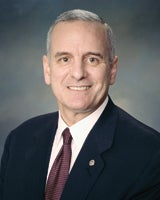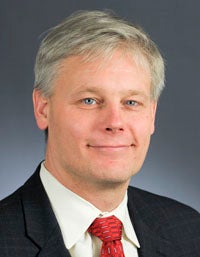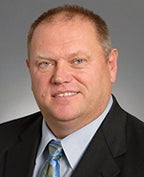Minn. budget pieces come together at Capitol
Published 10:07 am Friday, April 26, 2013
ST. PAUL — Minnesota’s two-year budget puzzle was coming together early this morning as the state Senate passed the two biggest pieces of state spending — health and social services, and education — after several hours of debate.
The Senate passed a $15.6 billion education package late Thursday that would add to the state’s general education funding formula and fund all-day kindergarten statewide. Then senators took up an $11.3 billion funding bill for health and social services, finally passing it just after midnight today. Those two bills consume more than two-thirds of Democrats’ proposed $38 billion state budget for 2014-15.
That leaves just a handful of budget bills still to be passed off the House and Senate floors, after which the real negotiations begin. Top lawmakers will haggle over the differences in their budget plans in conference committees, and send finished products back for final passage before they head to the governor’s desk.
On Wednesday, Gov. Mark Dayton held a closed door, no-staff meeting with Senate Majority Leader Tom Bakk and House Speaker Paul Thissen in an effort to forge a broad budget deal.
“I suggested the first thing we need to agree on is how much money the tax bill is going to raise,” said Bakk, DFL-Cook. Only then can they set the parameters for negotiators working out the details of spending bills, he said.
On Wednesday, the House passed its tax package to raise $2.6 billion in new revenue. The Senate on Monday is expected to vote on its tax bill, which will pay for one of Democrats’ top priorities this session: education.
Like the bill that passed the House earlier this week, Senate Democrats focused new education money on spreading free, all-day kindergarten statewide. About two-thirds of the state’s school districts currently provide all-day kindergarten, but some of them charge. The Senate bill also boosts early learning scholarships for poor 3- and 4-year-olds.
Sen. Chuck Wiger, a Maplewood Democrat and the bill’s author, said those investments would ensure that “no students will be denied education based on their zip code.”
But the two budget proposals differ when it comes to how much will be added to the state’s general funding formula. The Senate proposes adding $52 per pupil while the House proposes $209. Wiger’s budget also adds $11 million for special education programming.
One lingering question involves $854 million the state still owes schools from previous borrowing to balance budget deficits. Top House lawmakers say the debt needs to be settled, while Senate Democrats agreed with Dayton’s approach to pay off that so-called school shift.
“The (Democrats) campaigned up and down state to pay back the shift to our kids. You can’t talk out of both sides of your mouth.” said Sen. Torrey Westrom, R-Elbow Lake.
Senate Republicans also objected to the bill’s changes to high school graduation exams. It would replace the current test, which requires a student to get a minimum score in order to graduate, with a system of tests starting in eighth or ninth grade that Democrats say will help struggling students earlier and better prepare all students for college.
“A student doesn’t have to demonstrate proficiency in order to graduate,” Sen. Sean Nienow, R-Cambridge, said of that change. “It means your diploma is meaningless.”
The bill eventually passed on a 35-28 vote, with a handful of Democrats peeling off to vote no. Hours later, the Senate approved the health and human services budget 36-28. The vote was party-line with one exception: DFL Sen. John Marty, a longtime champion of generous safety net programs, voted no.
Marty’s vote demonstrated unhappiness on the party’s left with what they see as insufficient spending on assistance programs. While Dayton wants to boost such spending, DFL legislative leaders insisted on $150 million in reductions from the amount that would be needed to keep up with inflation and projected growth in need.
That’s drawn criticism from both traditionally DFL activist groups and a number of Republicans, who say the proposals don’t spend enough to raise pay at nursing homes and care facilities that are in danger of closing.
“We’ve got budgets with almost $3 billion in new spending but we’re taking $150 million from health and human services,” said Sen. Julie Rosen, R-Fairmont, the lead Senate Republican on the health budget. She said the Senate version spends about $100 million on implementing federal health care changes in Minnesota.
“That could be directed other ways. The priorities are just goofy,” Rosen said.
The House and Senate health budgets don’t cut any services now being provided. But Steve Larson, policy director for ARC of Minnesota, said many services now delivered by the state have long waiting lists.
ARC and similar groups rallied Thursday for the annual “Disability Day at the Capitol.” Those in attendance, many in wheelchairs, chanted “we matter” and held up signs including one that read, “Don’t take away my independence.”
Dayton, who sought more money for health and social services than proposed in the House and Senate bills, told the crowd that boosting funding for such programs is a long-term priority. Larson said advocates are relying on Dayton to push Democratic lawmakers in the conference committee to boost spending levels.
“We’re bombarding the governor with emails and calls asking him to stand strong,” Larson said. “Push those budget levels up.”







